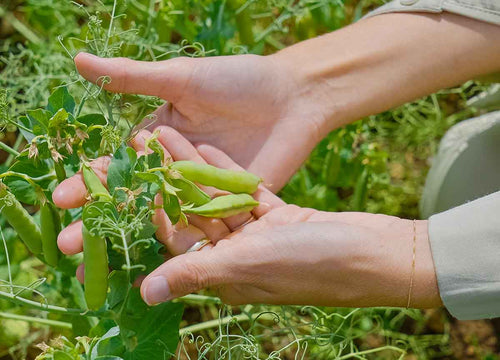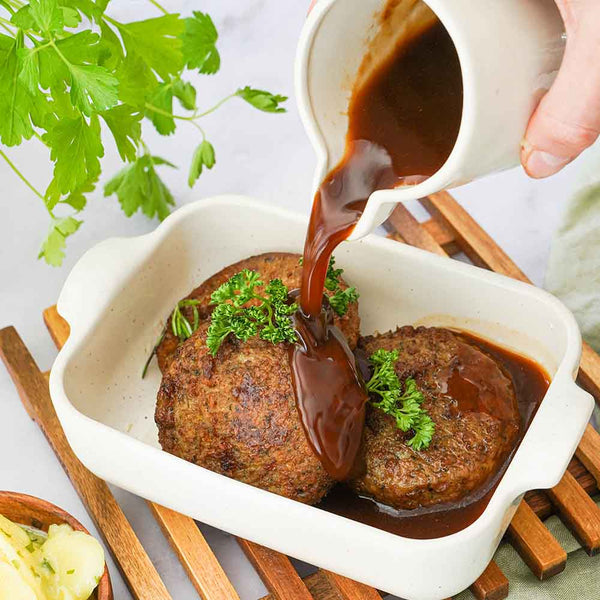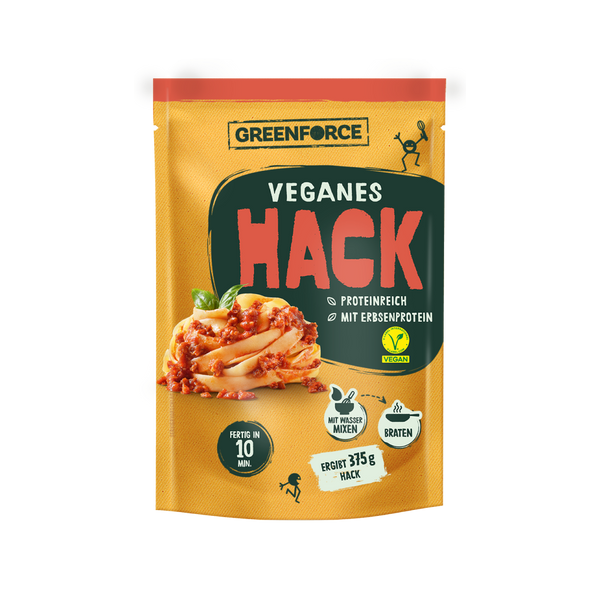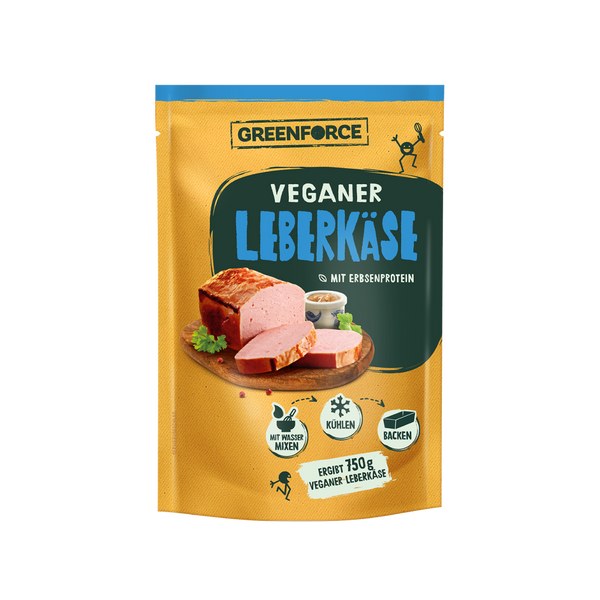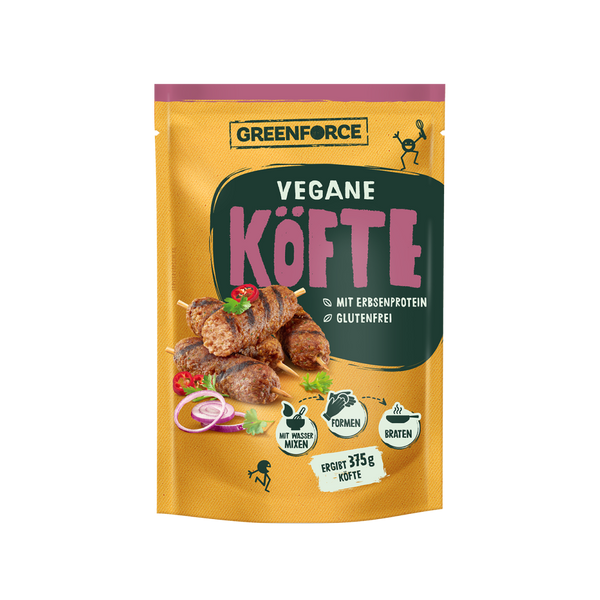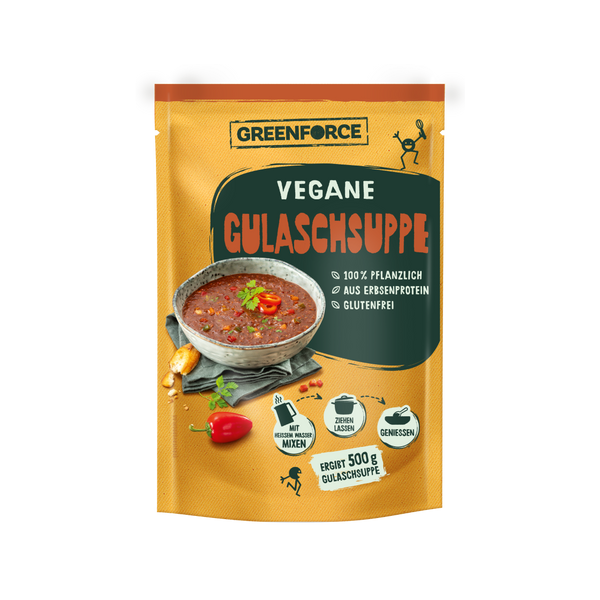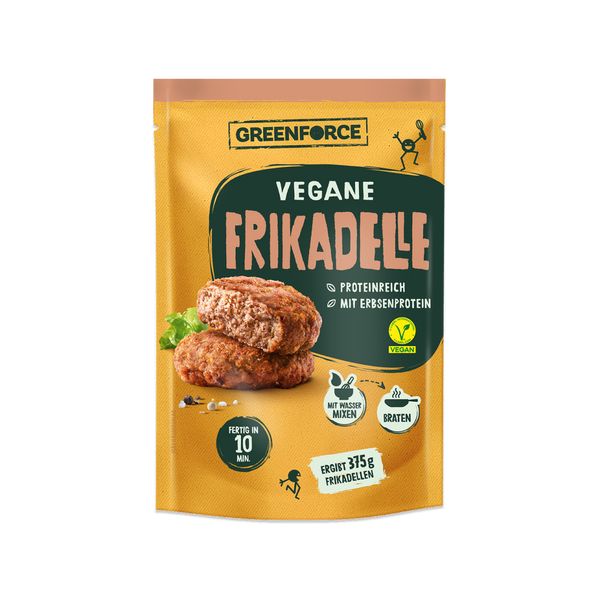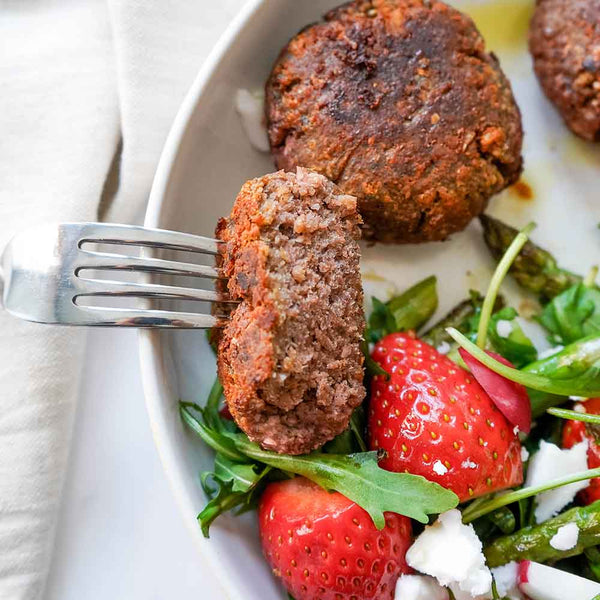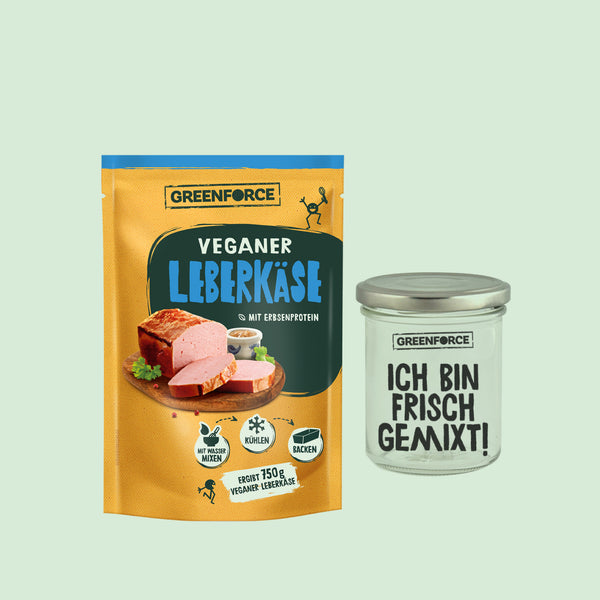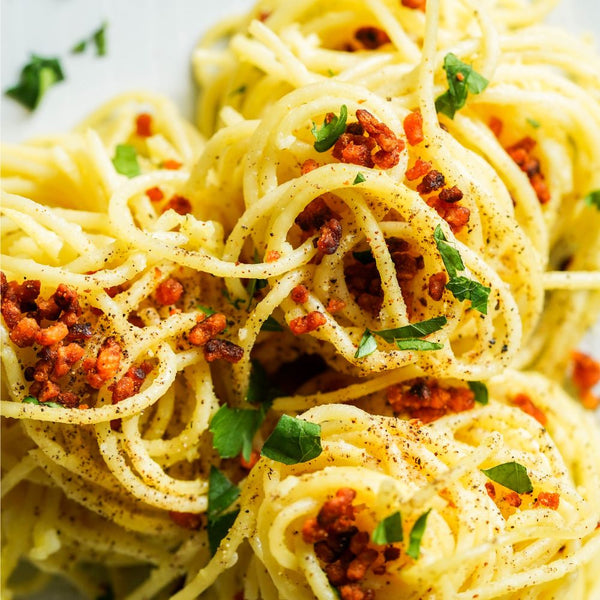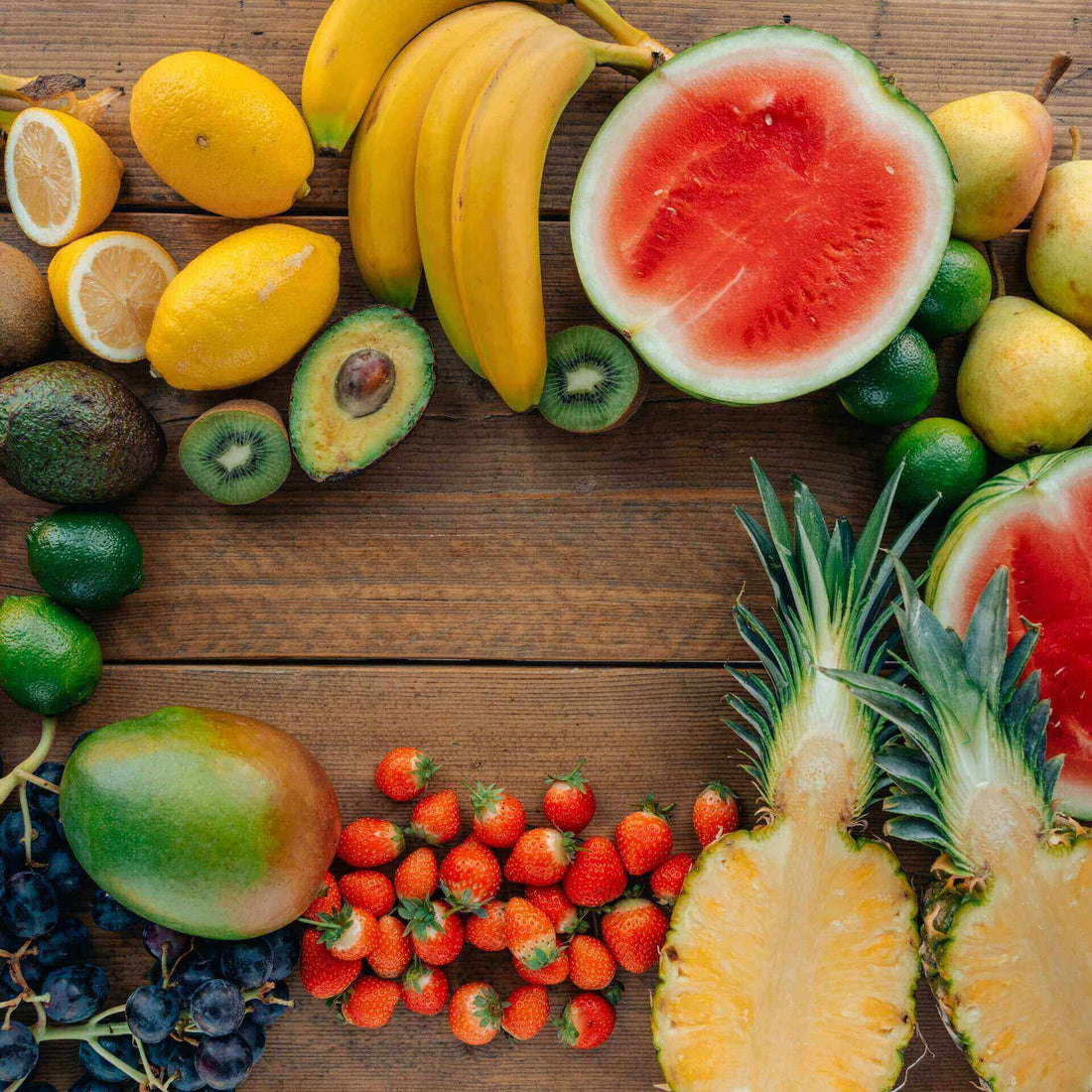Histamine intolerance: causes, symptoms and the right diet
Theresa Aicher
10/10/23
Reading time: 8 minutes
If you suffer from stomach cramps, diarrhea, nausea, runny nose or palpitations after eating mature cheese, salami, chocolate or red wine, histamine intolerance could be the cause. A red face after eating and a recurring skin rash can also be related to the messenger substance. Too much histamine can also cause migraines.
Here at Greenforce you will find out what causes this condition and how the right diet can help cure histamine intolerance.
What does histamine intolerance mean and how does it happen?
Around one percent of Germans suffer from histamine intolerance . Two out of three people affected are women. In 80 percent of all patients, the problem first occurs after the age of forty.
The disease, also known as histaminosis, is an intolerance of the body to the messenger substance histamine. This is a biogenic amine that the body can produce itself but also absorbs through food. It is found primarily in foods that go through a ripening or fermentation process (e.g. hard cheese, salami, wine), spoil quickly at room temperature (e.g. fish) or have been stored refrigerated for several days (e.g. Marinated vegetables).
As a nerve messenger (neurotransmitter) and tissue hormone , histamine is involved in a variety of processes in the human organism . Among other things, it lowers blood pressure, activates digestion and contributes to the immune system. It is of central importance when allergic reactions occur.
Histamine intolerance occurs when the body is unable to sufficiently break down histamine that is released or supplied with food. Previously often viewed as an allergy, histamine intolerance has now been identified as a metabolic disorder .
What types of histaminosis are there?
Histamine intolerance can occur temporarily, but can also become chronic.
- Temporary histamine intolerance
In this variant, the sudden food intolerance only occurs after consuming unusually high amounts of foods containing histamine. The body is temporarily overwhelmed because it cannot produce enough diamine oxidase (DAO) quickly enough to quickly break down histamine. This means that an excess of the messenger substance remains in the body and leads to the typical symptoms.
However, temporary histaminosis can also occur without excessive histamine intake, for example through a blockage of the histamine-degrading enzymes by alcohol or medication.
- Chronic histamine intolerance
Chronic histamine intolerance can cause symptoms after every meal. The reason for this is that the DAO level is permanently too low.

What are the causes of histaminosis?
The triggers of histaminosis have not yet been conclusively clarified.
Several factors usually come into play during training. These primarily include:
- excessive consumption of histamine-rich foods within a day or during a meal,
- a lack of diamine oxidase and other histamine-degrading enzymes in the intestine,
- Alcohol : Alcoholic drinks are not only often rich in histamine, they also increase the intestinal permeability to the messenger substance. Alcohol also stimulates the mast cells to produce more histamine.
- the consumption of other biogenic amines (e.g. from pineapple, bananas, sauerkraut or soft drinks),
- increased permeability of the stomach and/or intestinal mucosa due to inflammation or infections,
- an underlying allergy (e.g. fruit allergy ) or pseudoallergy as well
- mastocytosis (the presence of too many mast cells in the body).
Medications such as expectorants, antihypertensives and some painkillers and antidepressants can also be the cause of histaminosis. In women, histamine intolerance can also fluctuate depending on the cycle.
It has not yet been scientifically proven whether increased histamine intake through food can be the sole cause of histamine intolerance.
Stress as a cause of histamine intolerance
Psychological stress can stimulate the peripheral nervous system to release increased histamine . For most people, this psychosomatic component is negligible compared to histamine intake through food . However, if you are predisposed to it, it can be the main source or can increase borderline histamine levels.
How does histamine intolerance manifest itself?
Whether temporary or chronic histamine intolerance : the symptoms are diverse and can affect individual organs, but also different organ systems at the same time.
Typically, people with histaminosis experience symptoms such as:
- red face after eating with feeling of heat in the head,
- Headache, travel or seasickness,
- obstructed nasal breathing, swelling of the nasal mucosa, runny nose,
- bronchial obstructions, asthma attacks,
- low blood pressure, heart palpitations, cardiac arrhythmias,
- Bloating, diarrhea, gastrointestinal cramps, flatulence,
- Tendency to rashes, hives.
How is histamine intolerance diagnosed?
The first indication of histaminosis is provided by non-specific signs such as:
- frequent headaches or migraines
- Intolerance to red wine and other alcoholic drinks,
- Intolerance to hard sausages, hard cheese, tomatoes, chocolate ,
- Stomach and intestinal problems such as increased stomach acid production and diarrhea,
- fast pulse, low blood pressure, cardiac arrhythmia,
- allergic reactions after X-ray contrast media,
- in women : severe pain on the first day of menstruation (dysmenorrhea).
Since there is no diagnostic procedure to detect histamine intolerance , the path to diagnosis is through diet and provocation. Your doctor must first rule out diseases that cause similar symptoms. These include, in particular, irritable bowel syndrome (IBS), ulcerative colitis, celiac disease and cancer.
The actual diagnosis consists of systematically avoiding certain foods for several weeks and then consuming these foods in a targeted manner. If a sudden food intolerance occurs, the diagnosis is clear.

Can histaminosis be cured?
With the following measures you can achieve significant relief of symptoms or even complete freedom from symptoms.
Diet change
The most important component of treatment is to avoid the triggering factors. The best way to do this is to change your eating habits. You should first have an allergist clarify whether there are any other intolerances, allergies or other illnesses. For example, if a fruit allergy or gluten intolerance remains undetected, this can have a negative impact on the success of the treatment.
How does the change in diet work?
When adjusting your diet, your own tolerance level plays an important role. Doctors recommend a three-stage diet change that serves both to identify the causes and to treat them.
- Limit histamine intake
In this ten to 14-day phase, you eat a low-histamine, vegetable-based mixed diet with a minimal number of foods. Changing the composition of the meal in conjunction with an improved supply of nutrients is intended to support digestion. The goal is to reduce the symptoms as best as possible.
- 2. Test phase
During this phase, you specifically reintroduce suspicious foods and observe what level of histamine your individual tolerance threshold is. It is also important to take personal factors such as stress, medication and menstruation into account. The test phase is intended to help expand the choice of food. The duration is up to six weeks.
- 3. Nutrition in everyday life
You gradually incorporate thelow-histamine diet into your everyday life. You can eat anything that you tolerate well and that is good for you. Even small sins are allowed if you have your histamine levels under control. If symptoms increase again, it can help to keep a food diary and go back to the test phase. The ultimate goal is to ensure a needs-based nutrient intake while maintaining a high quality of life.
Which foods are problematic if you have histamine intolerance?
In contrast to other intolerances, with histaminosis there is no sharp transition between tolerated and intolerable. In addition to the individual severity, the exact trigger, the amount consumed and, last but not least, the freshness of the food also play a role. It is therefore not possible to create a generally valid compatibility list. The following list can therefore only provide a rough guide.
Caution is advised with:
- longer-aged cheeses such as Camembert, Parmesan, Gouda, Cheddar and Emmental,
- smoked and pickled fish,
- smoked, cured and marinated meat,
- Raw sausage such as dried salami, Zervelat sausage or raw ham,
- Alcohol such as red and white wine, champagne or beer,
- Baked goods with additives, wheat germ, ready-made baking mixes,
- histamine-rich vegetables such as tomatoes, sauerkraut, spinach and canned vegetables,
- histamine-rich fruits such as pineapple, bananas, citrus fruits, strawberries and kiwi,
- Confectionery such as chocolate, peanut cream, marzipan or nougat,
- Nettle tea, black and green tea as well
- Vinegar, excluding apple cider vinegar.
When it comes to wine, you can now also use vegan alternatives .
Which foods are generally well tolerated?
Since fermentation and fermentation processes increase the histamine content of foods, you should generally make sure to eat the freshest, unprocessed products possible.
These foods are suitable for people with histaminosis:
- Short-ripened cheeses such as butter cheese, cottage cheese, cream cheese or mozzarella,
- freshly caught white fish or high-quality frozen food,
- cooked ham and sausage,
- Grains and grain-like products such as corn, rice, spelt, oats, millet, amaranth or quinoa,
- Pasta based on spelled, corn or rice, crispbread, yeast-free bread,
- Snacks such as candies, fruit gums, potato chips or pretzel sticks,
- plant-based milk products such as oats, almond or rice milk,
- milk, sour cream, cream,
- honey, maple syrup, agave or apple syrup,
- vegetable oils.
In the Greenforce range you will also find many products that are suitable for a healthy diet for histaminosis.
In addition, you can safely consume plant-based foods such as the following fruits and vegetables:
- Berries such as blueberries, currants, blueberries and cranberries,
- pome fruits such as apples and pears,
- Stone fruits such as cherries, apricots and mangoes,
- Melon,
- Potatoes,
- cabbage and salads,
- Paprika,
- Zucchini,
- Cucumber
- Carrot.
Micronutrients for histamine intolerance
Especially if you cannot tolerate certain foods or only tolerate them to a limited extent, you should keep an eye on your micronutrient supply. Overall, a low-histamine diet is very healthy because it includes more plant-based foods. Depending on the severity of your intolerance, it may be necessary to supplement with certain nutrients in order to avoid deficiencies.
You should pay particular attention to your supply of vitamin C, vitamin B6, copper and zinc. The two vitamins and copper are important for the breakdown of histamine. Copper is a direct component of the histamine antagonist diamine oxidase. Your body needs zinc to activate vitamin B6.
It's best to discuss with your doctor whether nutritional supplements are a useful addition in your case.
Many complaints of histamine intolerance are treated with antihistamines. Dietary supplements containing DAO are offered as a preventive measure. However, the effectiveness of these enzyme preparations is not certain.
Some medications can negatively affect the breakdown of histamine by the enzyme DAO. These include, for example, preparations with the active ingredients metamizole, acetylcysteine, metronidazole, verapamil and metoclopramide. If necessary, replacing it with other medicines can help cure histamine intolerance.
Intestinal cleansing
If an intestinal problem is the cause of your histamine intolerance , targeted intestinal cleansing may be recommended. As a result, among other things, the DAO-producing cells recover and can usually fulfill their task again without any problems. This means your body is better able to break down histamine and the symptoms subside.
Histamine intolerance Causes: Quick help for acute complaints
Certain circumstances can cause histamine levels in the body to be so high that an acute histamine attack occurs. This is characterized by increased symptoms, which can range from histamine migraines to severe nausea, diarrhea and cardiovascular problems to exhaustion.
In this case, regardless of the causes of histamine intolerance, the following measures can help:
- Stay calm : Sit or lie down and breathe deeply into your stomach 10 times.
- Drink : Still water helps to flush the neurotransmitter from the body.
- Take vitamin C : High doses of natural vitamin C support the breakdown of histamine.
- Sleep : Go to bed as early as possible so that your body can regenerate for at least eight to nine hours.
- Take an antihistamine : If none of the above measures work, you can try an over-the-counter antihistamine. You can get this at the pharmacy.






